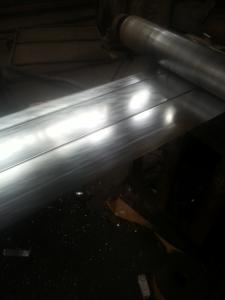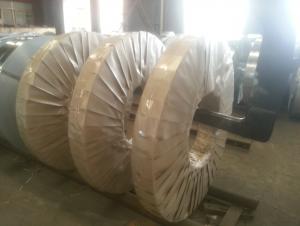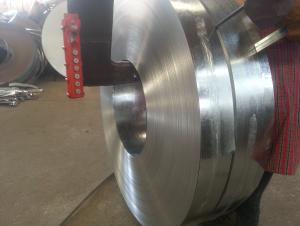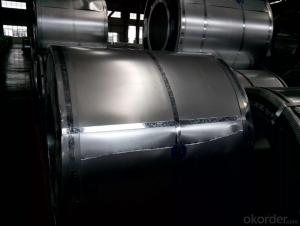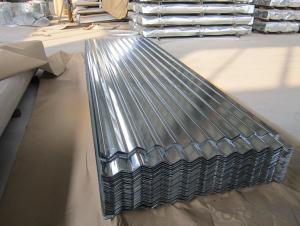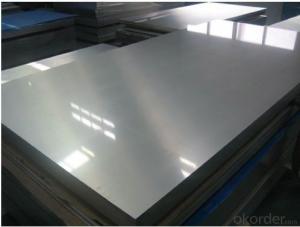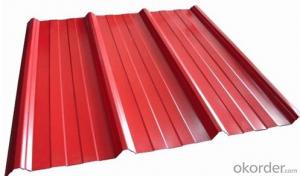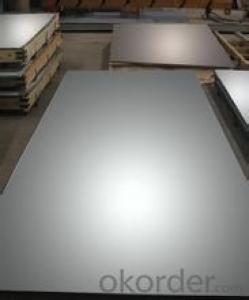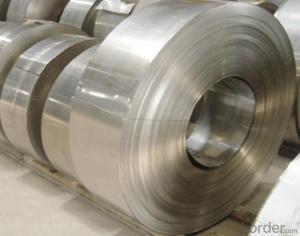Hot Dip Galvanized Steel Strips
- Loading Port:
- China Main Port
- Payment Terms:
- TT OR LC
- Min Order Qty:
- -
- Supply Capability:
- -
OKorder Service Pledge
OKorder Financial Service
You Might Also Like
Product Description:
Hot Dipped Galvanized Steel Strips
Hot-dip galvanized steel strips are available with a pure zinc coating through the hot-dip galvanizing process. It offers the economy, strength and formability of steel combined with the corrosion resistance of zinc. The hot-dip process is the process by which steel gets coated in layers of zinc to protect against rust. It is especially useful for countless outdoor and industrial applications.
Product Description Of Hot Dipped Galvanized Steel Strips
Thickness | 0.18mm-3mm |
Width | less than 600mm |
Zinc Coating | 30-200g/m2 |
Internal Diameter | 508mm/610mm |
Coil Weight | less than 3MT |
Quality | commercial and structural quality |
Surface Treatment | regular & minimum spangle, zero spangle, oiled & dry, chromated , non-skin pass , skin pass |
Standard | JIS G 3302, ASTM A 653M, EN 10327 |
Steel Grade | SGCC, CS, FS, SS, LFQ, DX51D+Z , S280GD |
Technical Data Of Hot Dipped Galvanized Steel Strips
Chemical Composition | C | Si | Mn | P | S |
0.04-0.06% | 0.01-0.03% | 0.18-0.22% | 0.014-0.016% | 0.006%-0.009% |
Yield Strength | (Mpa) 280-320 |
Tensile Strength | (Mpa) 340-390 |
Elongation | 20%-30% |
Out-of-square | not exceed 1% Flatness |
Bow | 15mmmax |
Edge Wave | 9mmmax |
Centre Buckle | 8mmmax |
Bending At 180 Degree | No crack, purling and fraction |
Application Of Hot Dipped Galvanized Steel Strips
It can be widely used in transportation, light industry, civil usage and farming. It is also the perfect building material in construction for making roofing tile, steel profiles for wall partition, T-bar, studs, fireproof door, air conditioning duct and home appliance.
- Q:How are steel strips processed for electrical conductivity?
- Steel strips can be processed to improve their electrical conductivity through various methods. One of the common processes is called annealing. Annealing involves heating the steel strip to a specific temperature and then cooling it slowly. This process helps to eliminate any impurities and internal stresses in the steel, resulting in improved electrical conductivity. Another method used is electroplating. This involves coating the steel strip with a layer of a more conductive material, such as copper or silver. The strip is immersed in an electrolyte solution, and an electric current is passed through it. This causes the conductive material to be deposited on the surface of the steel strip, enhancing its electrical conductivity. Furthermore, surface treatments such as chemical etching or mechanical polishing can be applied to remove any surface impurities or oxides that may hinder electrical conductivity. These processes help to create a clean and smooth surface, allowing better flow of electrical current through the steel strip. Overall, the processing of steel strips for electrical conductivity involves techniques like annealing, electroplating, and surface treatments to enhance the material's conductivity and ensure its suitability for electrical applications.
- Q:What are the factors that affect the machinability of steel strips?
- There are several factors that can affect the machinability of steel strips. 1. Chemical composition: The composition of the steel, including the presence of alloying elements, can greatly impact its machinability. Elements such as sulfur, phosphorus, and lead can improve machinability, while others like chromium and nickel can decrease it. 2. Hardness: The hardness of the steel strip is another crucial factor. Harder steels tend to be more difficult to machine, as they require more cutting force and can lead to higher tool wear. 3. Microstructure: The microstructure of the steel, including factors such as grain size and distribution, can affect machinability. Fine-grained steels generally have better machinability compared to coarse-grained ones. 4. Heat treatment: The heat treatment process used on the steel strip can significantly impact its machinability. Improper heat treatment can result in increased hardness or internal stresses, making machining more challenging. 5. Cutting conditions: The speed, feed rate, and depth of cut during machining operations also play a critical role in machinability. Proper cutting conditions must be selected to ensure efficient material removal and avoid excessive tool wear. 6. Tool material and geometry: The type of cutting tool used, as well as its material and geometry, can influence machinability. Tools with appropriate hardness, coatings, and cutting edge angles must be selected to optimize the machining process. 7. Lubrication and cooling: The use of appropriate lubricants and coolants during machining operations can enhance machinability. They help reduce friction and heat generation, improving surface finish and tool life. 8. Machine rigidity: The rigidity and stability of the machine used for machining steel strips are crucial factors. Machines with higher rigidity can provide better stability, resulting in improved machinability. Overall, a combination of these factors and their proper consideration is essential to achieve optimal machinability when working with steel strips.
- Q:How are steel strips tested for straightness?
- Steel strips undergo a variety of methods to test their straightness. Trained professionals visually inspect the strips for any visible bending or warping. Straightedges or precision rulers are also used to check for deviations from a straight line along the length of the strip. Besides visual inspection, advanced techniques like laser measurement systems are utilized. These systems accurately measure the straightness of the steel strip by directing a laser beam along its length and recording any deviations from a straight line. This method provides precise and quantitative data, enabling a more objective assessment of the strip's straightness. Moreover, mechanical tests are conducted to assess the straightness of steel strips. These tests involve subjecting the strip to specific forces or stress, such as tension or compression, and measuring the resulting deformation. Any significant bending or curvature observed during these tests indicates a lack of straightness. In summary, steel strips undergo a comprehensive testing process to ensure their straightness. This process involves visual inspection, the use of straightedges or precision rulers, laser measurement systems, and mechanical tests. Employing these methods guarantees that steel strips meet the required straightness standards for various applications.
- Q:What are the dimensions of steel strips?
- The dimensions of steel strips can vary depending on the specific application and requirements. Common dimensions include thicknesses ranging from 0.1mm to several millimeters and widths ranging from a few millimeters to several meters.
- Q:What does galvanized steel strip A6 mean?
- The chemical and chemical reactions between the substrate and the molten bath of the hot galvanized steel pipe are complicated and the corrosion resistant structure is closely alloyed with zinc and iron alloy. The alloy layer is integrated with pure zinc layer and strip steel matrix. Therefore, it has strong corrosion resistance.
- Q:What are the different grades of steel used for strips?
- The different grades of steel used for strips can vary depending on the specific application. Some common grades include low carbon steel (such as AISI 1008 or 1010) for general-purpose strips, high-strength low alloy (HSLA) steel for stronger and more durable strips, stainless steel for corrosion resistance, and tool steel for specialized cutting or shaping strips.
- Q:Can steel strips be customized?
- Yes, steel strips can be customized to meet specific requirements, such as size, shape, thickness, and surface finish. Customization allows steel strips to be tailored to different applications and industries.
- Q:How are steel strips used in the production of razor blades?
- Steel strips are used in the production of razor blades as the base material. These strips are shaped, sharpened, and coated to create the precise and sharp cutting edge required for effective shaving.
- Q:How are steel strips used in the defense industry?
- Steel strips are utilized in various ways in the defense industry, such as for manufacturing armored vehicles, tanks, and military aircraft. These strips are commonly used to reinforce and strengthen critical components, including structural parts, armor plates, and bulletproof panels. Additionally, steel strips are crucial for producing weapons, ammunition, and other defense equipment that require high strength and durability.
- Q:How do steel strips contribute to the strength of structures?
- Steel strips contribute to the strength of structures in several ways. Firstly, steel is an incredibly strong and durable material, known for its high tensile strength. When steel strips are incorporated into a structure, they provide reinforcement and support, helping to bear heavy loads and resist external forces such as wind or earthquakes. This reinforcement helps to prevent deformation or collapse of the structure, ensuring its stability and longevity. Additionally, steel strips can be strategically placed in key areas of a structure to distribute and transfer loads more efficiently. By acting as load-bearing components, they can effectively transfer the weight and stress from one area to another, preventing localized points of weakness or failure. This distribution of load helps to evenly distribute the forces acting on the structure, enhancing its overall strength and stability. Moreover, steel strips are often used as tension members in structures, such as beams or columns. Due to their high tensile strength, they are able to resist pulling forces and prevent the structure from being pulled apart. This is particularly crucial in structures that might experience high tension forces, such as bridges or tall buildings, where the steel strips help to counteract the effects of gravity and keep the structure intact. Furthermore, steel strips are resistant to corrosion and degradation, making them highly suitable for long-term structural applications. This durability allows structures to maintain their strength and integrity over time, reducing the need for frequent repairs or replacements. The inclusion of steel strips in the construction process ensures that the structure remains robust and resilient for years to come. In conclusion, steel strips greatly contribute to the strength of structures by providing reinforcement, load distribution, tension resistance, and durability. Their integration helps to ensure the stability, safety, and longevity of various types of structures, from buildings and bridges to infrastructure and industrial facilities.
1. Manufacturer Overview |
|
|---|---|
| Location | |
| Year Established | |
| Annual Output Value | |
| Main Markets | |
| Company Certifications | |
2. Manufacturer Certificates |
|
|---|---|
| a) Certification Name | |
| Range | |
| Reference | |
| Validity Period | |
3. Manufacturer Capability |
|
|---|---|
| a)Trade Capacity | |
| Nearest Port | |
| Export Percentage | |
| No.of Employees in Trade Department | |
| Language Spoken: | |
| b)Factory Information | |
| Factory Size: | |
| No. of Production Lines | |
| Contract Manufacturing | |
| Product Price Range | |
Send your message to us
Hot Dip Galvanized Steel Strips
- Loading Port:
- China Main Port
- Payment Terms:
- TT OR LC
- Min Order Qty:
- -
- Supply Capability:
- -
OKorder Service Pledge
OKorder Financial Service
Similar products
New products
Hot products
Hot Searches
Related keywords

